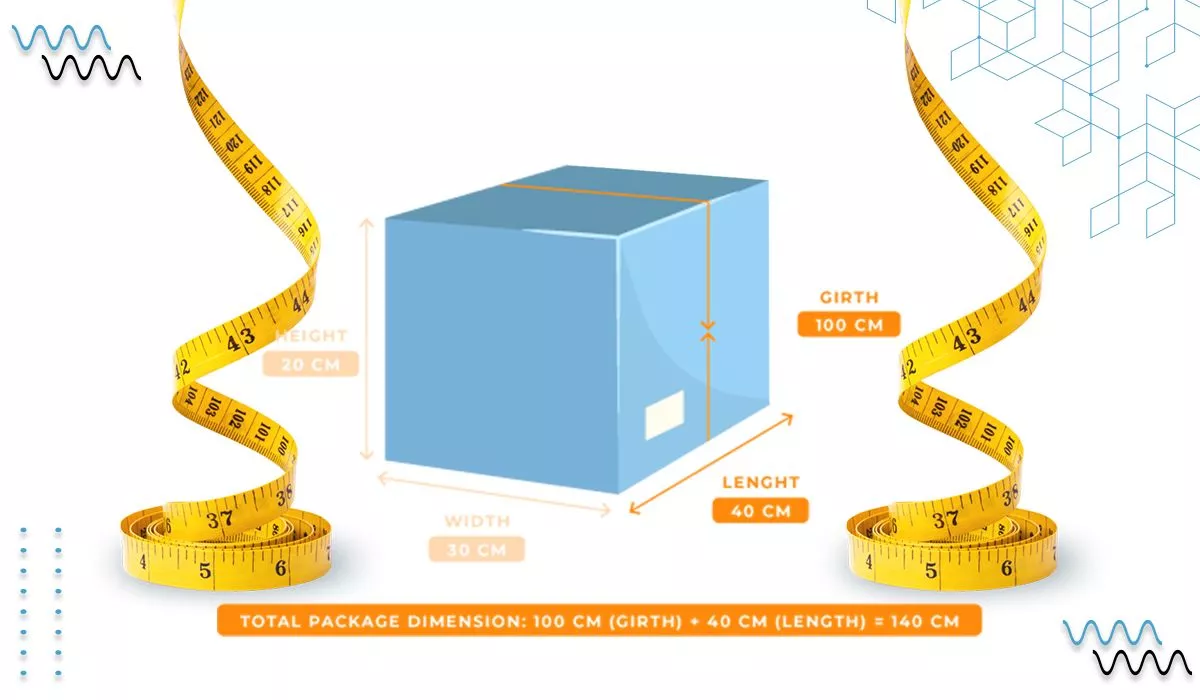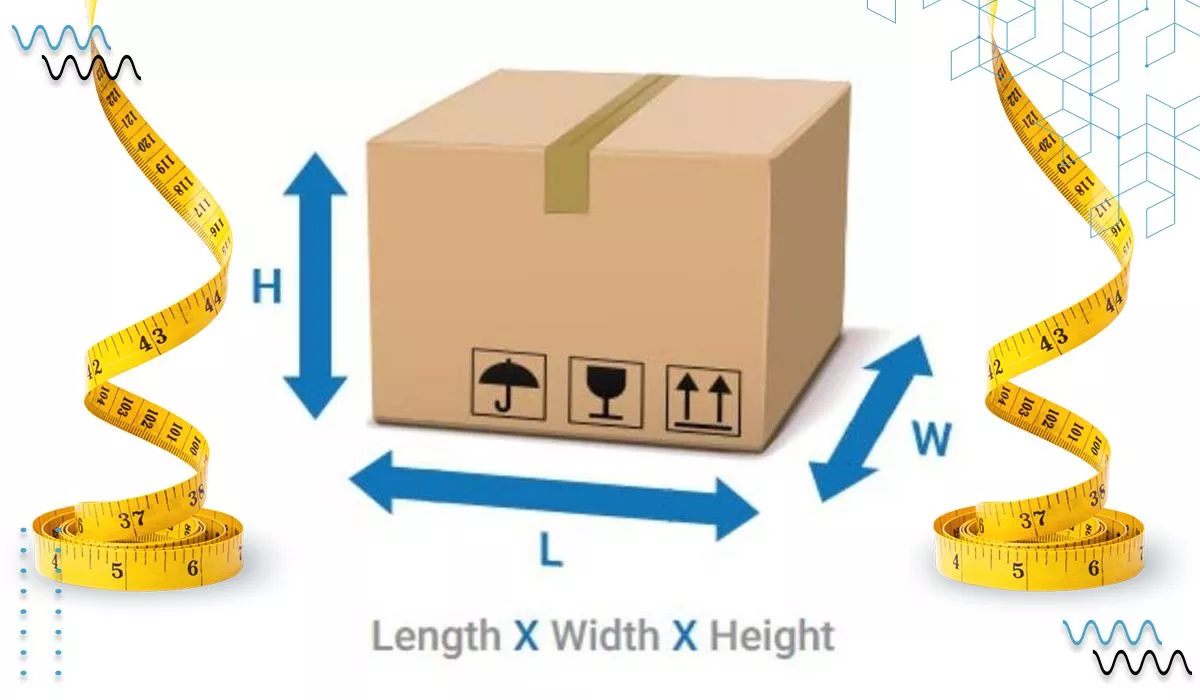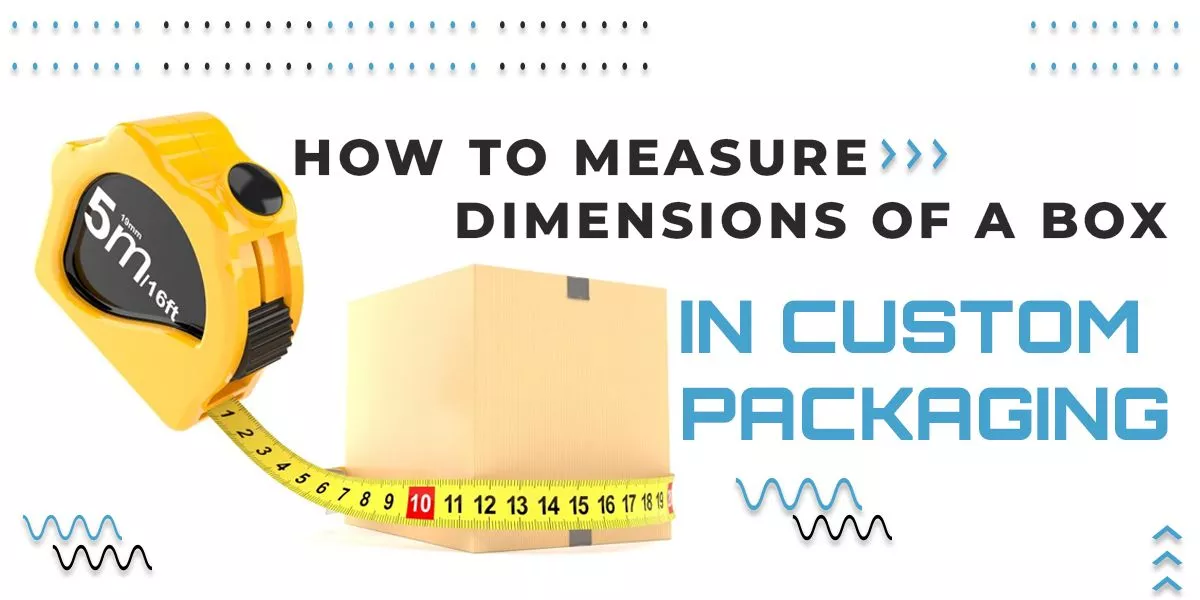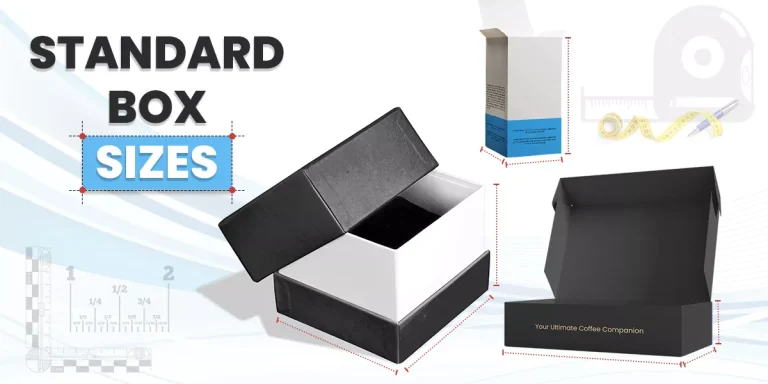How to Measure Dimensions of a Box
The dimension of a box is directly related to the lengths of the three dimensions of a box. You can easily measure the dimensions of a box by following three easy steps.
- First of all, measure the length of the box. The length of a box is the lengthiest side once you hold the box at 90 degrees.
- Now, turn the box 90 degrees again and calculate the width.
- Lastly, calculate the height of the box, which is the remaining side of the packaging.
Dimension = Length x Width x Depth
Example:
Let’s say a box has dimensions of 10X20X30 in length, width, and depth, respectively. You can multiply these values to get the actual dimension to make a box accurate for products.
10” X 20” X 30” = 6000”
Significance of Box Measurement
The objective behind packaging is evident from the daily use of packed products. As we all know, packaging protects the products, but it also promotes a product and helps satisfy customers. In short, protection is the primary goal, but it also performs many other duties for products. If proper measurements are not made, all these packaging functions may counter-perform all these duties.
In other words, Box measurement is essential to let a box perform all its essential duties. A well-measured and manufactured box provides the best protection for the products and keeps them secure from any damage during transportation.
Therefore, we always take careful measures and provide the clients with 2D & 3D Free Mockups before an order is shifted to the production department. You can look at our designs to analyze the specific measures taken by our beloved clients.
How to Measure the Girth of a Box

The measurement around a box’s circumference is girth, which is more expansive than the actual width. The girth of a box is essential, primarily when you ship your boxes from one place to another. Packaging experts also measure the width of boxes with cylindrical shapes.
You need to measure the width and height if you want to calculate the girth of a box.
For a better understanding, look at the formula:
Girth = (H + W) X 2
EXAMPLE:
If we use the instance of a box of 30X20in, we will multiply the width (15 inches) by 2. This would give us 30. Then, we take the height (10 inches) and multiply it by 2. This would give us 20.
We then add the results together to get the girth.
30in + 20in = 50in.
Read Our blog, which is about Pizza Box Sizes and Dimension
How to Calculate the Volume of a Box

You can calculate the volume of a box with its length (L), width (W), and height (H). First, you need to measure these values and then use its formula for calculating volume.
You can calculate the volume of your boxes by the following formula:
Volume = L X H X W
If we use the instance of a box of 10 L, 5 W & 20 H, we will multiply all these values with each other.
Volume = 10 X 5 X 20 = 1000
Dimensions of a Box Depends on the Product
The dimensions of a box are based on the dimensions of a product. So, the dimensions of the products are measured, which is later used for assembling boxes for these products. However, you need proper preparations for measuring the dimensions of a box, as discussed below.
Preparations for a Box Measurement
You can use a ruler or measuring tape to measure the dimensions of a box. However, this is a manual measurement. With the advancement of technology, measuring packaging dimensions is no longer a difficult task. Even more, using advanced machinery and digital designing gives more accurate packaging measurements.
Therefore, Instant Custom Boxes offers free design support. Such free services help you get the most accurate and relevant product boxes. You can fully customize your boxes into any shape and design you want for your products.
Measurements of Box Based on Purpose
Box measurements are calculated depending on the objective of the calculation. Packaging a product in a box and sending a box from one place to another are two different scenarios. The main difference between both is described below.
- Measurement for Shipping a Box
You need different measurements for shipping a box from one place to another. This measurement calculates the exterior length, width, and height. The exterior volume and weight are more important for shipping a box than the interior ones. However, you can use the same methodology and formula to calculate the exterior volume of a shopping box.
- Measurement for Business Products
As said above, when you make measurements of a box for packaging a product, you also need to measure the interior volume of a box. It simply depends on the volume of a product to be packed in the box. First, you can measure the dimensions of products and then use those calculations for manufacturing a box of that size.
You Can Also read Our Blog, which is about measuring the dimensions of a box of cereal.
Calculating Cubic Footage: Mastering the Box for Shipping Prowess
Now that you’ve measured your box’s dimensions like a pro, let’s unlock the magic of cubic footage. This seemingly complex term simply refers to the total volume of your box, and it’s crucial for various reasons, especially shipping costs. Here’s how to calculate it and impress those delivery ninjas:
Formula Fiesta:
Remember those handy measurements (length, width, and height)? It’s time for them to shine! Simply multiply all three values:
Cubic Footage = Length (in inches) x Width (in inches) x Height (in inches) / 1728
Why 1728? It’s a conversion factor that transforms your fancy inch measurements into the cubic feet preferred by shipping companies. Don’t worry—calculators are your best friend here!
Example in Action:
Let’s say your box measures 12 inches long, 8 inches wide, and 5 inches high. Plugging these values into the formula:
Cubic Footage = 12 x 8 x 5 / 1728 = 2.78 cubic feet
Voila! Your box boasts a volume of 2.78 cubic feet.
Now you can:
Compare shipping rates: Different carriers base their charges on weight or dimensions (often, whichever is greater). Knowing your box’s cubic footage empowers you to compare rates and choose the most cost-effective option.
Estimate shipping costs: Many online shipping calculators require the box’s dimensions or cubic footage. Armed with this information, you can get a rough estimate of your shipping costs before finalizing your order.
Avoid package weight restrictions: Some carriers have weight limitations for specific box sizes. Knowing your cubic footage helps you stay within these limits and avoid potential surcharges.
Bonus Tip: Round your cubic footage to two decimal places for consistency and accuracy when comparing rates or using online tools.
By mastering the art of cubic footage calculation, you’ll transform from a box-measuring novice to a shipping superhero, navigating costs and restrictions with confidence. Remember, every inch counts, and this knowledge empowers you to make informed decisions for your packaging needs!
Conclusion
Measurements for the dimensions of boxes are essential for many reasons. First, these measurements are necessary to pack different products. Therefore, proper dimensions are crucial to manufacturing these boxes. Secondly, exterior dimensions are critical to note before shipping packaging. However, the same formula is applicable to calculate these measurements.
Instant Custom Boxes provides free design support if you want to manufacture your high-quality packaging. The purpose of free consultation and free design support is to customize your boxes into the best possible forms.










